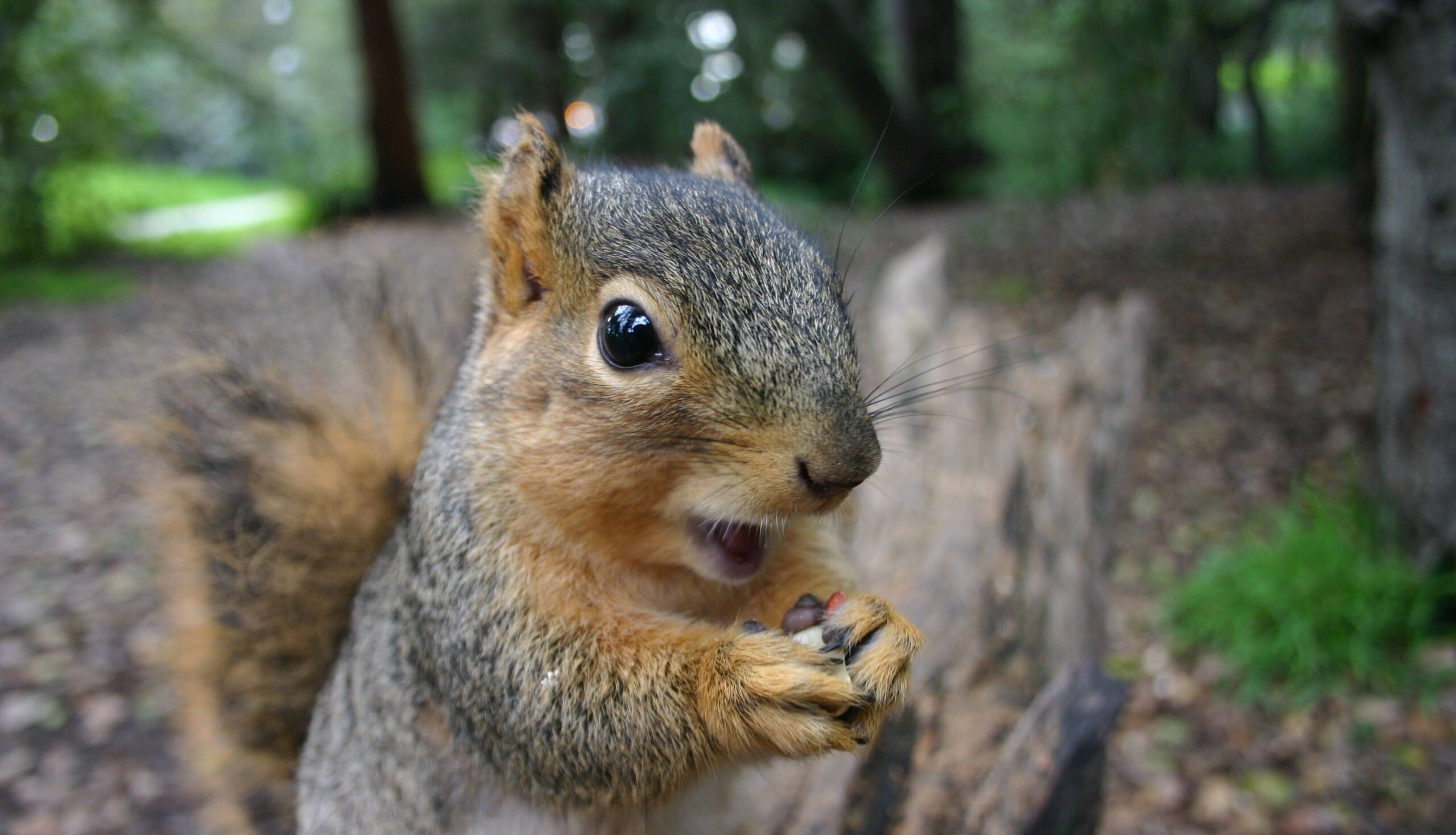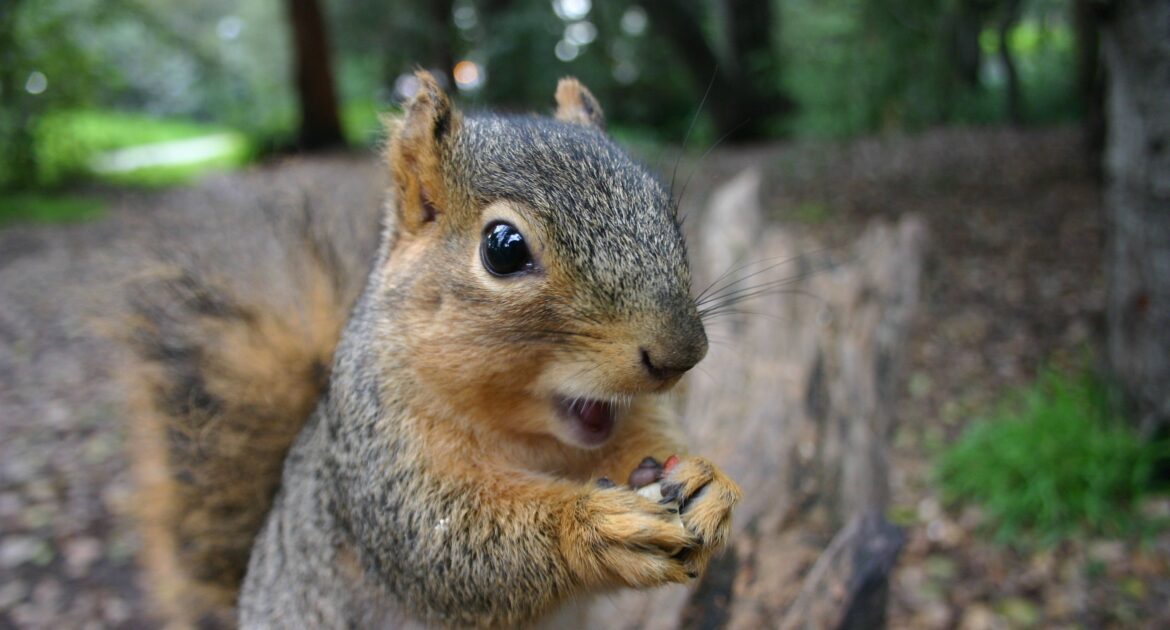Squirrels, the fluffy-tailed acrobats of the forest, captivate our imaginations with their curious habit of burying nuts. This seemingly whimsical activity is, in fact, a sophisticated survival strategy developed over millennia to ensure these creatures have a steady supply of food during lean winter months. One can’t help but wonder, however, do squirrels ever forget where they bury their precious treasures?
Indeed, squirrels possess impressive memories that assist them in relocating many of their caches. However, not every nut is reclaimed; some are inevitably forgotten, leading to unintended sprouting and forest regeneration. Beyond understanding the dietary habits of these animals, where the question “What do squirrels eat in the wild?” is often asked, we’ll highlight the challenges they face in urban settings.
We’ll touch on the importance of humane wildlife removal services, such as Skedaddle Humane Wildlife Control in Whitchurch-Stouffville, which employs respectful methods to manage squirrel-human interactions, ensuring coexistence with our wildlife neighbours. Join us as we unravel the intricate behaviours of squirrels and the interplay between memory, survival, and human-wildlife relationships.
Why Do Squirrels Bury Nuts?
Squirrels are natural planners. With the change of seasons, they instinctively prepare for the harshness of winter. Food scarcity during colder months can pose a significant challenge to survival. To combat this, squirrels engage in a behaviour known as caching, where they bury nuts as a food reserve. By doing so, they ensure they have enough sustenance when resources are otherwise depleted.
This behaviour isn’t just about food; it’s an ingrained survival tactic. The instinct to create food caches is passed down through generations, allowing squirrels to thrive across various environments. Their ability to store food allows them to maintain energy levels and body warmth during the coldest months, making nut-burying a crucial part of their life cycle.
Do Squirrels Remember All Their Burying Spots?
While squirrels possess an impressive cognitive map to relocate many of their buried nuts, their memory isn’t infallible. This section delves into the fascinating details of how squirrels locate their caches and the extent of their memory’s precision.
- Spatial Memory: Surprisingly, squirrels boast excellent spatial memory. They rely on visual cues and landmarks to locate their buried treasures. This keen memory helps them retrieve their food stores when needed, showcasing their impressive mental mapping abilities. These skills are honed over time and are vital for their continued survival.
- Forgetting Some Caches: While squirrels remember most of their caches, they don’t recall them all. Some nuts remain undiscovered, leading to unintended benefits for the environment. Forgotten caches have the potential to sprout into trees, contributing to forest regeneration and biodiversity. This forgotten nut phenomenon highlights the dual role of squirrels as both consumers and inadvertent gardeners.
- Scatter Hoarding: To increase their chances of retrieval and minimize losses to other animals, squirrels practice scatter hoarding. This involves spreading their caches across various locations, ensuring that even if some are lost or forgotten, others remain accessible. It’s a calculated strategy that maximizes their food security and showcases their adaptability in the wild.
Squirrel Eating Habits
When considering the dining habits of squirrels, we often conjure up images of them nibbling on acorns or hoarding nuts for their winter stockpile. However, these agile foragers enjoy a far more varied diet than we might expect. During the warmer months, squirrels expand their menu to include an array of seeds, fruits, fungi, and even insects. These diverse food sources play a crucial role in their health and energy levels, allowing them to thrive in a range of environments.
The seasonal changes bring a buffet of opportunities for these industrious creatures. As landscapes bloom, squirrels eagerly consume available fruits and berries, while fungi found in damp, shaded areas offer a distinct taste. The inclusion of insects, though less known, provides a supplemental source of protein during periods of abundance. This versatile approach to eating reflects their adaptability and maximizes their chances of survival through the diversity of resources they capitalize on when temperatures rise.
As seasons shift toward autumn, the important task of burying specific nuts accelerates. These nuts are selected for more than just cache potential; they are high-energy reserves crucial for winter hibernation. Every piece they cache serves as a compact powerhouse of calories, ensuring that through the harsh winter months, squirrels can sustain themselves when other food sources are inaccessible.
Keenly aware of their dietary needs, squirrels prioritize nuts and seeds with high fat and protein content. This strategic selection ensures that each retrieved deposit substantially contributes to their energy intake. Walnuts, hazelnuts, and pecans become prized possessions in their winter arsenal, chosen for their superior nutritional profiles. These selection processes underscore their innate understanding of nutrition and survival tactics.
The dietary habits of squirrels extend far beyond simply burying nuts for later use. Their diverse and calculated food choices exemplify their ability to adapt to changing conditions while mitigating the health risks associated with a seasonal supply imbalance. As they forage, selecting items for both immediate consumption and long-term storage, squirrels display a fascinating mix of instinct and strategy that keeps them resilient in the face of nature’s challenges.
Environmental Impact of Forgotten Nuts
While the perseverance of squirrels in caching their food is crucial for individual survival, it also holds greater significance in forest ecosystems. When some of these cached nuts are forgotten, they often germinate and grow into trees, contributing significantly to forest regeneration. This natural planting method is a phenomenal example of how squirrels inadvertently assist in reforestation, highlighting their role as environmental custodians beyond mere survivalists. Over time, as these forgotten seeds take root and mature, they contribute to increasing canopy coverage, enhancing biodiversity, and enriching forest habitats.
Moreover, squirrels are vital agents of seed dispersal, inadvertently supporting their ecosystems’ balance and health. By burying seeds away from the parent tree, they reduce competition for resources, thus giving each buried seed a better chance at successful germination. This practice naturally curbs potential tree congestion, promoting a healthy distribution of vegetation across landscapes. Trees that flourish from these dispersed seeds enhance soil quality, help maintain the regional water cycle, and support a wide range of wildlife. The squirrels’ inadvertent contribution to biodiversity illustrates an unseen synergy within the lifespan of forests.
The quiet role that squirrels embody in forest reclamation and seed dispersal serves as a testament to the intertwined existence of flora and fauna. While their actions could be inadvertently beneficial, it’s crucial to manage interactions where squirrels intersect with urban areas humanely.
Squirrel Smart: Embracing Nature’s Planners
In summary, squirrels exhibit remarkable memory abilities when it comes to retrieving their caches, thanks to their exceptional spatial memory and use of visual landmarks. However, even the most adept squirrels occasionally forget some of their buried treasures. These forgotten nuts, far from going to waste, serve as seeds that contribute significantly to forest regeneration and ecological balance. Therefore, while the question “do squirrels remember where they bury their nuts?” might remain partially unanswered, one truth is evident: their activities foster invaluable environmental benefits.
For residents facing squirrel-related challenges, Skedaddle Humane Wildlife Control in Whitchurch-Stouffville stands ready to offer professional and humane solutions. They ensure that wildlife removal is conducted with respect and care for these vital animal neighbours and their habitats.
Discover the fascinating world of squirrels and their behaviour with the assistance of experts. Skedaddle Humane Wildlife Control is your go-to service for wildlife removal in Whitchurch-Stouffville, helping you manage your environment while respecting our animal counterparts. If you’re curious about “What do squirrels eat in the wild” or need assistance with wildlife removal, don’t hesitate to reach out. Contact us to request a quote and learn more about how you can contribute to harmonious cohabitation with nature’s crafty planners.





